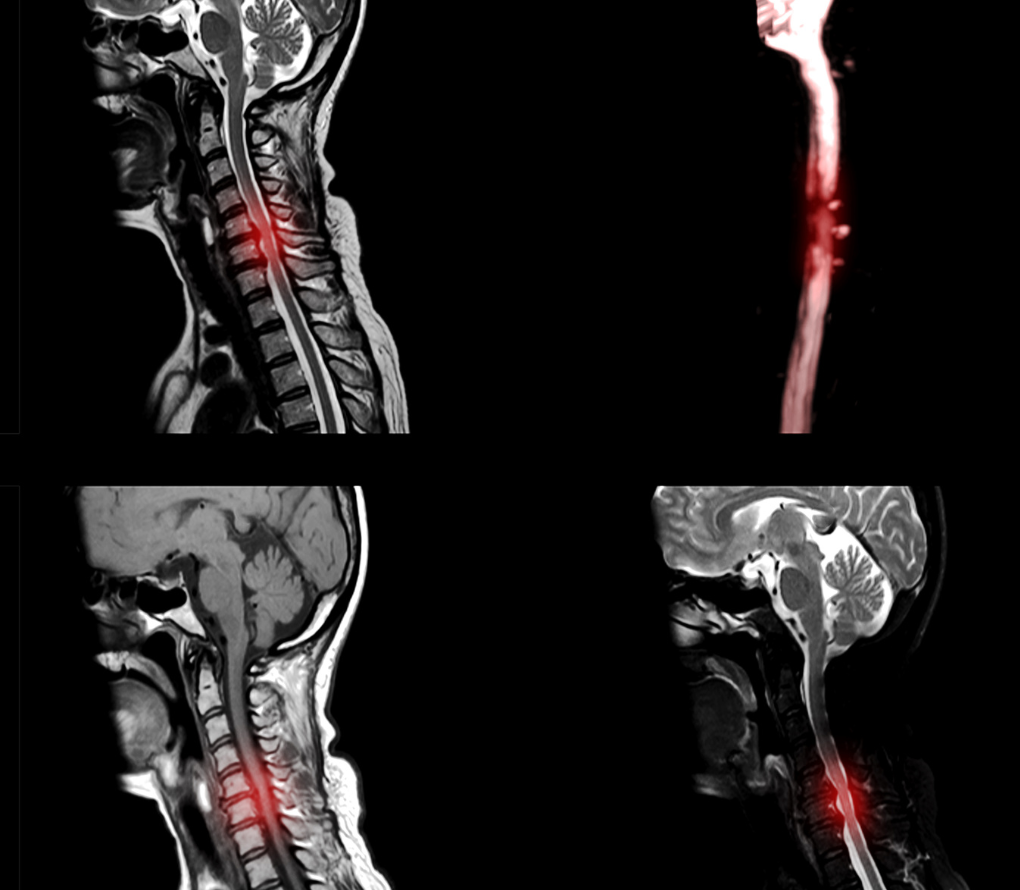Overview
Cervical myelopathy is a condition where the spinal cord in the neck (cervical spine) becomes compressed or squeezed. The spinal cord is like the body’s “information highway,” carrying signals between the brain and the rest of the body. When it gets compressed, it can cause problems with walking, hand function, balance, and sometimes bladder or bowel control.
It is most often due to age-related changes in the spine (also called cervical spondylotic myelopathy). Unlike simple neck pain or pinched nerves, myelopathy affects the spinal cord itself, making it more serious. However, with timely diagnosis and treatment, patients can maintain good quality of life.
Causes
Cervical myelopathy develops when something narrows the spinal canal and presses on the cord. Common reasons include:
- Age-related wear and tear (degenerative changes) – Bone spurs, disc bulges, and thickened ligaments.
- Herniated (slipped) discs – Pressing directly on the spinal cord.
- Congenitally narrow spinal canal – Some people are born with less space in the spine.
- Injury or trauma – Fractures or dislocations in the neck.
- Less common causes – Tumors, infections, or inflammatory conditions.
👉 Cervical spondylotic myelopathy is the most common cause of spinal cord dysfunction in adults over 55 years.
Signs and Symptoms
Symptoms often develop slowly, but may gradually worsen over time. Patients may notice:
- Clumsiness of hands – Difficulty with buttons, handwriting, or fine tasks.
- Balance problems – Unsteady walk or frequent tripping.
- Neck pain or stiffness – Sometimes mild, but not always present.
- Arm or leg weakness – Feeling of heaviness or tiredness.
- Numbness or tingling – Especially in the arms or hands.
- In advanced cases – Trouble with bladder or bowel control.
Unlike simple neck pain, myelopathy often affects coordination and walking. This makes it important to seek medical advice early.
Treatment Options
Conservative (Non-surgical) Care
- For very mild cases without significant cord pressure, careful monitoring, physiotherapy for neck support, and lifestyle modifications may be recommended.
- However, because myelopathy involves the spinal cord, conservative care alone usually cannot reverse cord compression.
Surgical Options – Mainstay of Treatment
Surgery is usually recommended for moderate to severe cases, or if symptoms are worsening. Goals are to decompress the spinal cord and prevent further damage. Options include:
- Anterior Cervical Discectomy and Fusion (ACDF) – Removal of disc/bone spurs from the front.
- Cervical Laminoplasty – Expands the spinal canal without fusion, preserving motion.
- Laminectomy with fusion – Removes pressure from the back and stabilizes the spine.
Evidence shows that 70–80% of patients improve in function and quality of life after surgery, and surgery helps halt further decline. Early surgery generally offers better outcomes than waiting until symptoms are severe.
Frequently Asked Questions
Not always. Very mild cases can be monitored. But since myelopathy involves the spinal cord, surgery is often recommended to prevent progression.
Recovery varies. Many patients notice improvement within weeks to months, but full recovery may take 6–12 months. Some long-standing symptoms may not fully reverse, but surgery usually prevents worsening.
Medicines and physiotherapy can relieve pain and stiffness but cannot remove spinal cord compression. They are often used alongside surgery or for symptom management in mild cases.
Myelopathy often progresses slowly, but without treatment, symptoms like walking difficulty and hand weakness can worsen over time, reducing independence.
No, it is not life-threatening in itself. But untreated cases can lead to significant disability and reduced quality of life. Early diagnosis and treatment make a big difference.
Book Now
Consult our experts today

